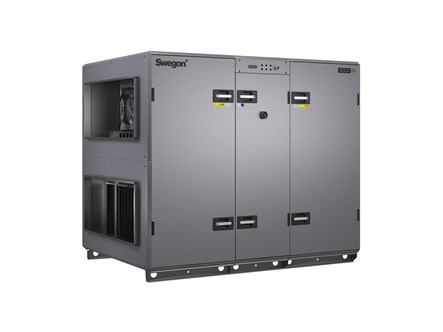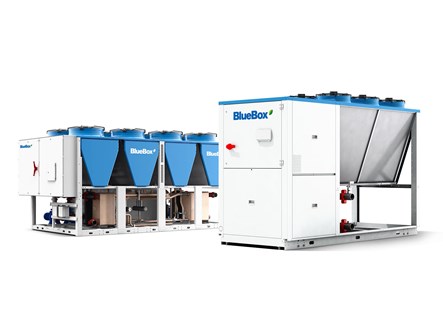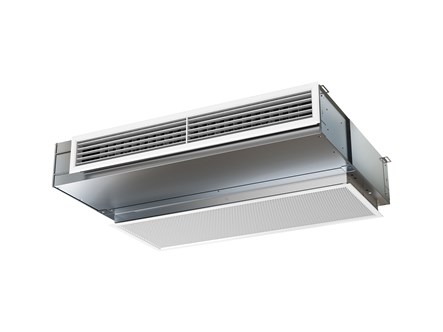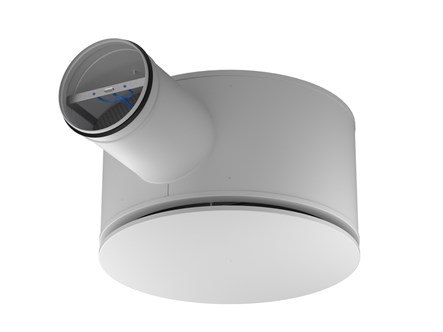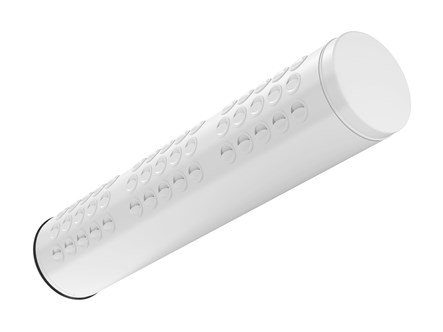Our experts' thoughts about a hotel solution
We asked our experts Åsa Norén Lundh, manager for the Indoor Environment Competence Center at Swegon, and Ulf Hörman, responsible for business development of Swegon's System Solutions, to design a “napkin sketch” for a hotel. We are happy to share it together with a great share of HVAC-knowledge.
Which is it - air or water, air and water?
We usually express ourselves in the terms of "air or water" and we then refer to the choice of utilising an airborne system or a waterborne system, also often called hydronic system, for the heating or cooling demands in a building. However, the requirements in terms of ventilation and air quality can only be met by an airborne system, which is why "air and water" is not necessarily wrong.
A decision between air or water may be fairly easy in an older building because the existing duct work for ventilation can probably not be sized for both supply air and climatising. There might instead be water accessible for the use of a waterborne system and, subsequently, pipe work of significantly smaller space than up-sizing the ventilation ducts.
In a new-build, the expected activity and occupancy level needs to be considered together with the investment interest when air or water is to be chosen. Let's say that this HVAC solution is being designed for a new-build hotel. We would then suggest a hydronic system for the majority of the facilities inside the building.
Learn more about air and water
Space efficiency
In the left section I suggested a waterborne system for a new-build hotel. This because water has the ability to carry significantly more energy than air. This in turn, means that the water pipes for carrying the energy needed to either heat or cool a building are much less bulky than the otherwise needed ductwork for transporting air.
But as said, the ventilation requirements can only be met by using an airborne system. When air is used to only secure air quality in a building, ductwork can be reduced in size compared to when air has the task of ensuring both air quality and temperature in the building.
The investment cost of a hydronic system is higher. However, a hotel is quite often built on height, and if the ductwork in a tall building is minimised thanks to the above choice, stories can actually be gained. The payback time on the investment is then simultaneously shortened as more floor space can be sold to valuable hotel guests.
Swegon GOLD air handling units
Understood from the above section, air handling units may be used for one or more purposes in a hotel. The new-build hotel that we have chosen for this napkin solution needs air handlers for ventilation in the entire building, while heating and cooling requirements mainly will be met by a hydronic system.
For the majority of the hotel we would chose our Swegon GOLD RX air handling units with rotary heat exchangers. For the kitchen and restaurant the GOLD units would be of PX version, where PX stands for plate heat exchanger and which allows for a counter flow of separate supply and extract air. Particularly suitable for environments with excessive odours.
The GOLD air handling units are attractive in a number of ways, such as its small size, comprehensive control system and its easy installation and commissioning. They are also highly energy-efficient thanks to high-performing fans and the mentioned heat exchangers that transfer heat or cold energy from the extract air to the supply air. The latter allow for temperature efficiency of up to imposing 85%.
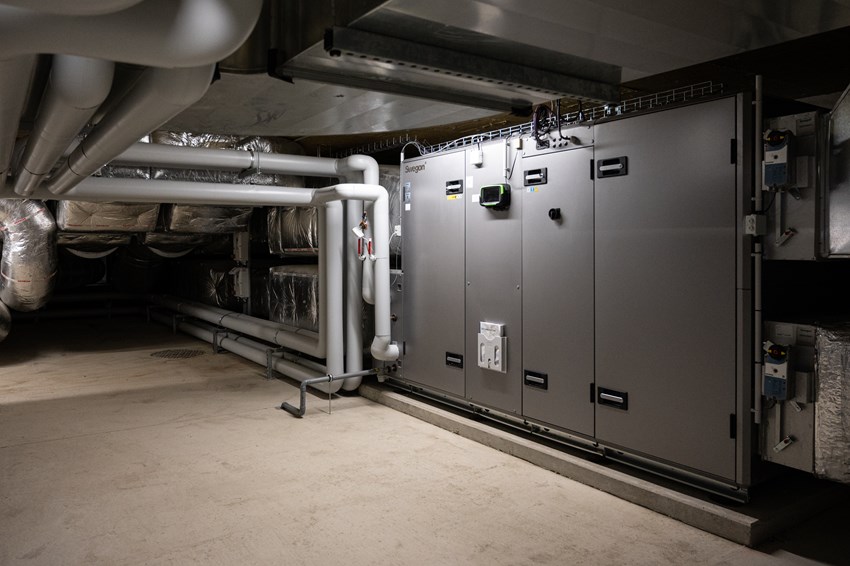
The balance between shafts and floor space
We mentioned space efficiency above in relation to air- or waterborne systems. Space efficiency is also of significant interest in terms of the air handling units. It may be assumed that air handlers should be placed in the basement or on the roof of a building, however what can be more space efficient is to spread them out on different floor levels. Large shafts for ductwork in the middle of the building may then be avoided, but it is important to acknowledge the required floor space for placement on a number of levels. A detailed comparison might be necessary.
Good to know, decentralised air handling units allow for certain flexibility. In a hotel, one or more units may be nearly turned off if rooms in a particular part or wing of the premises are not sold.
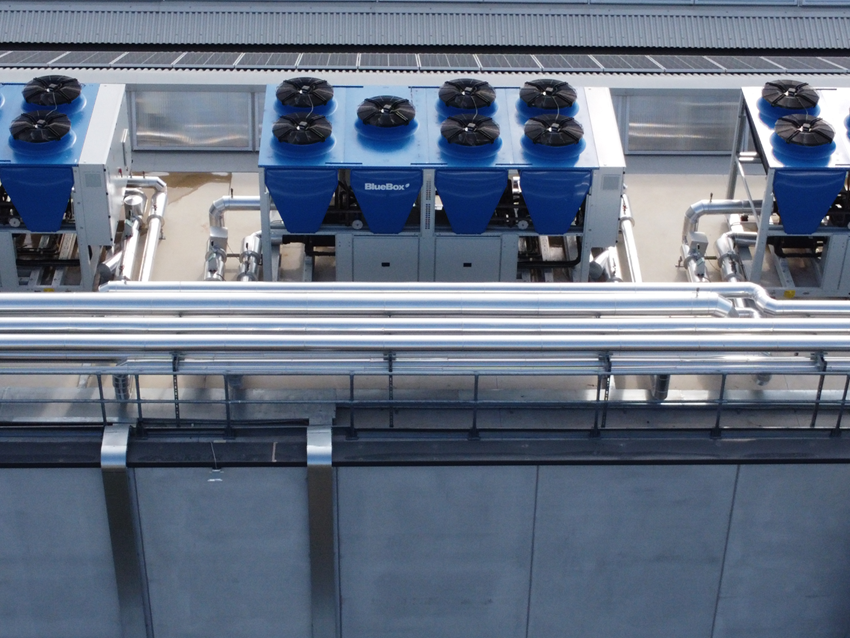
Heating and cooling
A BlueBox Omicron multifunctional unit is then my choice for heating and cooling in the building. This because it can provide both warm and cold water, even simultaneously, something that otherwise needs multiple units. The water generation may also include hot tap water which a hotel normally has an extensive need for.
When using an Omicron multifunctional unit notable savings can be achieved compared to the use of multiple heat pumps or chillers in regards to the initial investment. Further, the energy needed for actually running one unit compared to many could be less, but the significant energy savings comes from the unit's 4-pipe system that allows energy, heat or cold, to be transferred from one end of the building to another. Meaning, energy is saved when we go from parallel processes of heating and cooling, system efficiency is improved significantly. Needless to say, energy savings have a direct influence on building economics.
Depending on a number of factors the hotel might need more than one BlueBox Omicron unit to meet the indoor climate requirements. Let's say my hotel needs 2 units, I would then use a HYZER system to integrate them and by that optimize operating conditions of the two and reduce energy consumption even further. Depending on the building load, the multifunctional unit can also be combined with other heat pumps or chillers.
Read our expert's blog about 4-pipe product solutions
Learn more about HyzerSMART Link+ connects air handler and multifunctional unit
The chosen GOLD air handling units and the Omicron multifunctional units may be integrated by the means of our Swegon SmartLink+ system. The system can connect several GOLD air handlers, with different types of cooling and heating sequences, to one or multiple cooling/heating producers.
A significant energy saving can be made using SmartLink+ as it, by the means of valves, can ensure that current heating/cooling needs are met while keeping the cooling medium to as high temperature as possible and the heating medium to as low temperature as possible. The result of moderating the water temperature to suit the actual load instead of using standard water temperatures, is a more efficient operation of the compressor.
Actually, a 3% energy save is possible for every degree the cooling water temperature is raised and 2,5% for every degree the heating water temperature is lowered.
Products for the hotel room
Choosing room products for our hotel rooms in this building is fairly easy when we have chosen a hydronic system. Our Swegon PARAGON comfort unit is more or less designed and developed specifically for hotel rooms. PARAGON is an entire series of 1-way air distribution comfort modules of compact dimensions, suitable for ceiling or wall installation.
PARAGON is available with different control options for adjusting the indoor climate to an actual demand - a guest preference or the hotel occupancy. In our "napkin hotel" we suggest that we choose this product with our Swegon WISE system for a demand-controlled indoor climate.
Learn more about demand-controlled indoor climate in our technical guide
Get familiar with Swegon PARAGONAir in lobby and restaurant
We expect that our hotel has a quite spacious lobby and would therefore suggest that the requirements of air quality, heating and cooling are met by an airborne solution. There are a few things to consider when choosing air diffusers, technical and aesthetic. Let's say that this lobby is robust, we would then select our Swegon KITE free air diffuser in a customised color for it to blend in even though it is an exposed product.
A restaurant has similar traits as a lobby as it is a spacious room in the hotel and it has people coming and going at different times throughout the day. It is therefore suitable to use air here too. This restaurant is closely located to the lobby and the industrial look therefore continues into the dining area. The air diffuser we chooe is then our Swegon WISE Sphere free with an active slot for variable air flow. Also in a customised colour.
Learn more about ventilation principles in our technical guide
Water in the conference room
The conference center in this hotel is of moderate size. If there would have been a congress hall or a larger auditorium we would have suggested an airborne solution, perhaps with displacement diffusers or the custom made diffusers used when we provided Malmö Live with an innovative HVAC-solution.
As said, the conference rooms in this case are of moderate size and we therefore find our Swegon WISE Parasol Zenith comfort module very suitable. It is a waterborne, or hydronic, product with four-way distribution that ensures a perfect indoor climate by the means of WISE. WISE ensures a demand controlled indoor climate that is adjusted to the actual need, which may imply a complete turn off when the conference rooms are not in use. We would complement the climate modules with air diffusers such as Swegon COLIBRI to make sure it is possible to advance the air flow when the conference room is crowded. This to be able to meet the IEQ reqirements.
Swegon WISE
We have mentioned Swegon WISE along the way and it is our choice of system to crown off this solution. WISE is a complete and flexible system for demand control of buildings' solutions for ventilation, heating and comfort cooling (HVAC). In short, the basic purpose of WISE is to ensure a good indoor climate, and thereby satisfied guests, and to optimise the HVAC-operation for increased energy efficiency.
Guest satisfaction is in general positively related to the opportunity of adjusting the indoor climate to a preferred level, which is something Swegon WISE can allow for. At the same time, WISE can optimise for increased energy efficiency by reduce ventilation, heating or cooling of unoccupied hotel rooms to only care for the building. In order to not compromise guest satsifaction due to the reduced HVAC-operation in empty rooms, Swegon WISE can boost the indoor climate when the guest is at the check-in counter. A comfortably ventilated, heated or cooled room is then welcoming the guest upon arrival to the room. Even heating of the bathroom floor can be controlled by Swegon WISE.

Excellent communication
Swegon WISE is not only communicating with systems related to ventilation, heating and cooling (HVAC) in our hotel. It is also developed to be easily integrated with overall hotel systems like SCADA, and has the ability to communicate via BacNet, ModBus or open APIs.
First, Swegon WISE comprises room products for both air and waterborne climate systems. Further, it includes all requisite control equipment, as well as room units and sensors, which are linked together to form an entirety via a unique patented system for wireless communications. The wireless system is based on a mesh structure where each unit forwards information about nearby products, which helps the network to work around obstacles. The mesh structure may also be rearranged and products may be told to work in new contexts after a renovation or refurbishment, for instance. In sum, flexible for the use of a building today and tomorrow.
Easy installation, commissioning and future use
In the development process of our Swegon WISE system, sincere considerations have been made to make sure it is uncomplicated in the many steps from construction to future use. The digital aspects of WISE allows for simplified installation and commissioning which significantly shortens the timespan from ready building to an opened hotel.
In addition, WISE is provided with a smart control system and an intuitive user interface which further bring great values to all users, from installation technicians to the ones spending daily life in the indoor environment, in this case our hotel.
For further information about WISE
Let's return to the air handling unit
We chose the GOLD air handling units for this hotel because of the different needs in the building. We have so far mentioned the lobby and restaurant where the GOLD RX air handler is ensuring the entire indoor climate. It will also be the foundation of the solution for ventilation, heating and cooling in the gym where we have selected our duct diffuser called Swegon IBIS. It is a cost efficient choice, suitable for a gym where a large amount of air is needed.
Last but not least, the Swegon GOLD PX air handler selected for the kitchen is combined with a somewhat surprising air diffuser, a DRI. Swegon DRI is a displacement unit with an adjustable distribution pattern. It is generally used placed in the wall but we have found it works utterly well placed in the ceiling of large-scale kitchens too.
Not the last thing to think about
As said in the introduction to this guide, sound attenuation, or the elimination of noise is as important as the interior details guests are expecting in a hotel. It is therefore important to aim for low sound levels throughout.
Aside from using the Swegon sound attenuator CLA at room level we also suggest to use CALMO at the plant level and, along the way, indirect choices have been made to eliminate noise. To exemplify, the chosen air handling unit has a unique double casing and is designed with custom-made key components that makes the unit a balanced whole. The risk of vibrations, often the source of noise, is by that minimised. Further, the selected Bluebox OMICRON unit is available in a LN, low noise, version which may be chosen if the placement of the unit risks to negatively impact the soundscape inside the hotel.

Our final words on this hotel solution
Our hotel is now complete in terms of ventilation, heating and cooling. We have selected products and services that will give people in the hotel a fantastic indoor climate, guests considered as well as employees. The indoor environmental quality will invite to valuable rest and allow for the many facets of hospitality work to be carried out successfully, both remarkably important for customers to return and staff to stay.
Further, people today are more concerned about air quality in public places and an increasing amount are expressing a demand for sustainable hotel stays. The solution provided in this hotel meet both of these as energy savings are made on many different levels without compromising the indoor climate. This is in part thanks to the fact that our products and services are often developed, designed and produced by ourselves. We have been able to tailor and adapt products and services to fit into a whole. A whole with a focus on leaving as little operational carbon footprint as possible, meaning minimising the energy used for ventilation, heating and cooling in buildings. However, we recognise a need and maturity to also address the issue of embodied carbon, learn more about our RE:3 concept.
Products
The following items are mentioned as additional to the main products above
